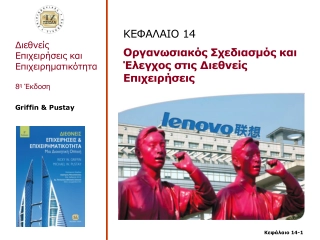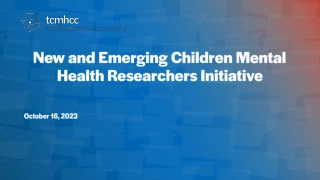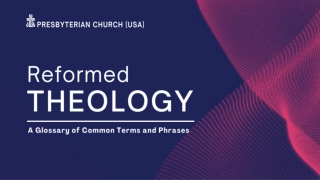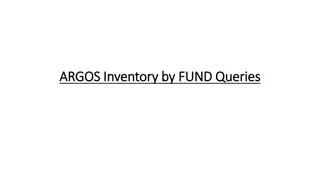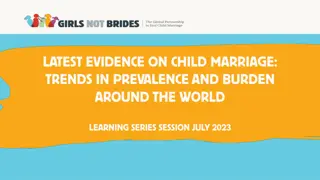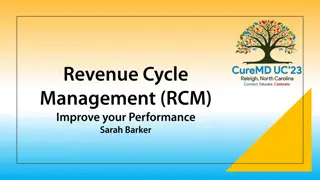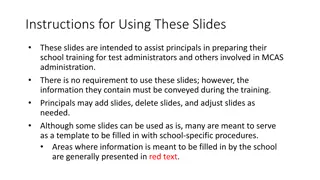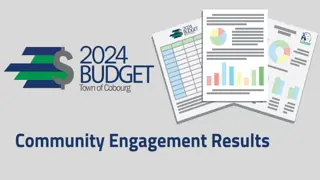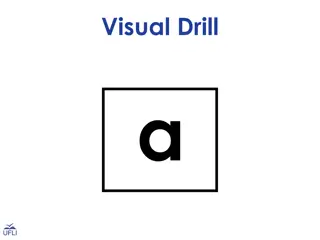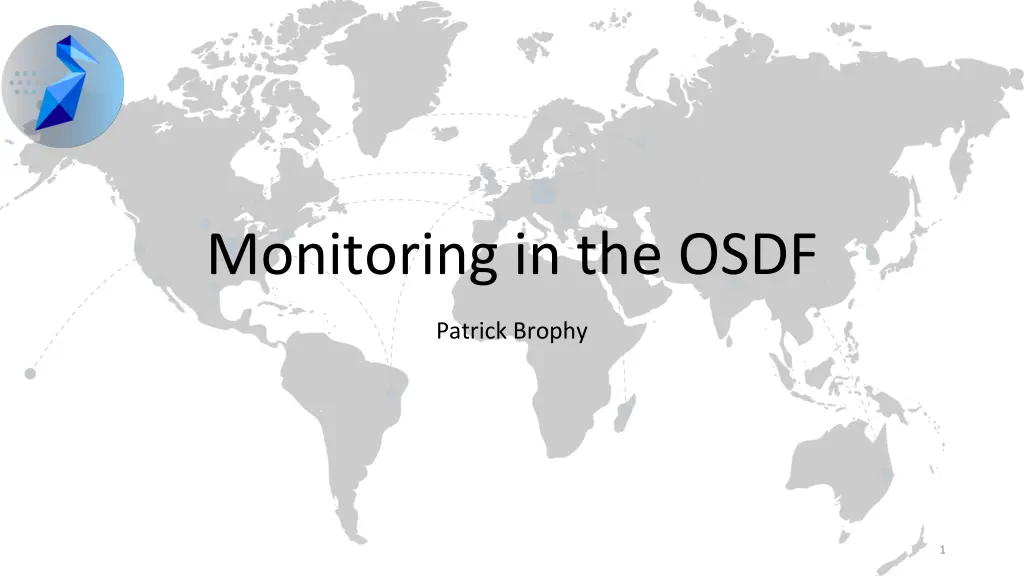
Understanding Monitoring in the OSDF
"Explore the importance of monitoring in the OSDF (Observability, Scalability, Diagnosability, and Fault Tolerance) to ensure reliability, trust, and growth. Learn about different monitoring needs, data records, and the foundation it provides for sustainable operations."
Download Presentation

Please find below an Image/Link to download the presentation.
The content on the website is provided AS IS for your information and personal use only. It may not be sold, licensed, or shared on other websites without obtaining consent from the author. If you encounter any issues during the download, it is possible that the publisher has removed the file from their server.
You are allowed to download the files provided on this website for personal or commercial use, subject to the condition that they are used lawfully. All files are the property of their respective owners.
The content on the website is provided AS IS for your information and personal use only. It may not be sold, licensed, or shared on other websites without obtaining consent from the author.
E N D
Presentation Transcript
Monitoring in the OSDF Patrick Brophy 1
Who am I? A very recent UW Madison graduate 2024 CHTC Fellow Research Software Engineer at The Morgridge Institute for Research 2
Story Time Don t worry I ll Hard to say. It happens when I m stressed out Oh I don t bring How long has Hmm. Let me be able to use Hey Doc, I m not sure what s wrong, but something is not right. my thinking is really slow. them with me. Well sometimes I feel like I can t think normally. Or and overwhelmed Well that s too bad. symptoms? on? vitals measure them What are your this been going check your my tools to 3
Monitoring is How We Diagnose the OSDF OSDF is massive and distributed Failures are often subtle, systemic, or intermittent Guesswork doesn't scale, we need observability 4
Monitoring for Different Needs Are we making an impact? Is OSDF helping me? Is my service healthy? Who s using OSDF? Why did my workflow fail? What needs attention? Researcher Operator Stakeholder 5
Monitoring = Measurable Trust We can t improve what we don t measure Monitoring is the foundation for reliability, trust, and growth Without it, we're guessing and reactive, not responsive 6
How does it all happen? Client Transfer Data Summary & Detailed Records 8
Monitoring Data - Summary Records Summary records allow us to answer: Is the service up? How effectively is the cache serving data? (Current connections, total bytes in and out) How is the service utilizing machine resources? (CPU, memory, disk) Are there any bottlenecks or errors in data transfer or file operations? This data gives both users and operators a high-level snapshot of service health and efficiency. This data also helps demonstrate to users how well the OSDF infrastructure supports high-throughput, reliable data access. Operators can quickly identify issues such as degraded performance, resource exhaustion, or failing components. 9
Monitoring Data - Detailed Records These records capture a significantly more detailed view Every read, open, close, the amount bytes per transfer Questions they answer: Operational Insights: How busy is the cache with IO? What happened to the cache between time 1 and time 2? These records can be used to construct histograms We can perform surgical analysis on a service 10
Dashboard 11
Client Transfer Data Using condor_history we are able to look at individual transfer data. This transfer data is stored into ElasticSearch for further analysis and reporting. 12
Reports All of this monitoring data eventually translates into reports We can generate reports to inform our stakeholders about the impact of the OSDF 15
Reports 16
Forward Looking There is still a lot of work to be done: Where did the client fail? Why did that transfer take so long? Who is using my Origin? Other questions: Better reports to filter out user problems (i.e. object not found) We also have lots of unknown unknowns! 17
Questions? This project is supported by the National Science Foundation under Cooperative Agreements OAC-2331480. Any opinions, findings, conclusions or recommendations expressed in this material are those of the authors and do not necessarily reflect the views of the National Science Foundation.

